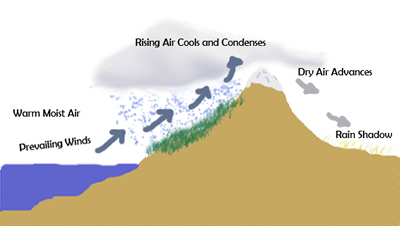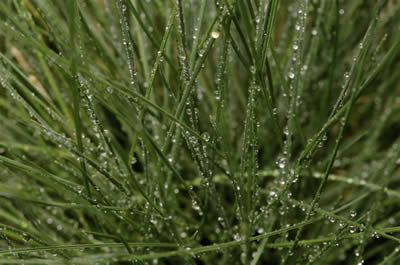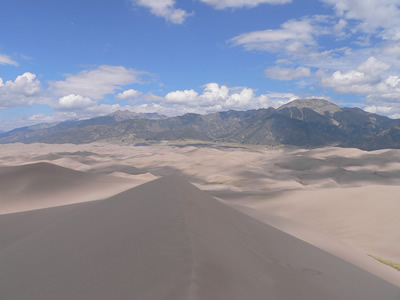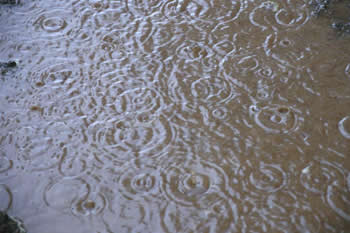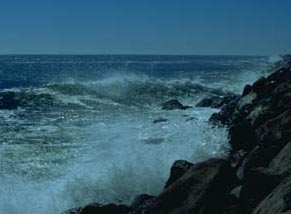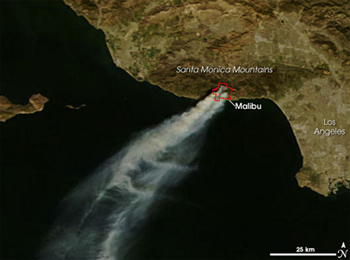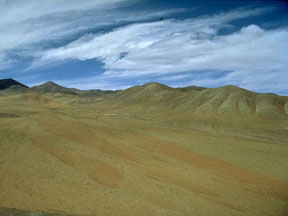Click on image for full size
Image part of the public domain
Related links:
Rain Shadow
A rain shadow is a dry region of land on the side of a mountain range that is protected from the prevailing winds. Prevailing winds are the winds that occur most of the time in a particular location on the Earth. The protected side of a mountain range is also called the lee side or the down-wind side.
Prevailing winds carry air toward the mountain range. As the air rises up over a mountain range, the air cools, water vapor condenses, and clouds form. On this side of the mountains, called the windward side, precipitation falls in the form of rain or snow. The windward side of a mountain range is moist and lush due to this precipitation.
Once the air passes over the mountain range, it moves down the other side, warms, and dries out. This dry air is usually caused by foehn winds and produces a rain shadow. Land in a rain shadow is typically very dry and receives much less precipitation and cloud cover than land on the windward side of the mountain range.
Some examples of rain shadow deserts in North America include:
- The east side of the Coast Mountains and Cascade Range in British Columbia, Canada
- The dry basins east of the Cascade Range in Washington and Oregon
- The Great Basin of Nevada and Utah, east of the Sierra Nevada mountain range
- The Mohave, Sonoran, and Chihuahuan deserts in the United States and Mexico
- The Colorado Front Range, east of the Rocky Mountains
Rain shadow deserts can be found in other areas of the world, including the following:
- The Gobi Desert in Mongolia and China is in a rain shadow due to the towering Himalaya mountain range
- The Atacama Desert in Chile is in a rain shadow created by both the Andes Mountains and weather patterns over the Pacific Ocean
- The Atlas Mountains in Algeria create a strong rain shadow to the south and form the northern edge of the Sahara desert
- The Hawaiian Islands have rain shadows on the leeward sides of volcanoes
- On the South Island of New Zealand, the Southern Alps create a rain shadow to the east of the range


